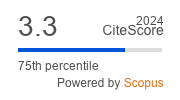Editorial | Open Access
Spatial Underpinnings of Social Inequalities: A Vicious Circles of Segregation Approach
| Views: | 5874 | | | Downloads: | 3514 |
Abstract: A paradigm shift is taking place in spatial segregation research. At the heart of this shift is the understanding of the connectedness of spatial segregation in different life domains and the availability of new datasets that allow for more detailed studies on these connections. In this thematic issue on spatial underpinnings of social inequalities we will outline the foundations of the ‘vicious circles of segregation’ framework to shed new light on questions such as: What is the role of residential neighbourhoods in urban inequalities in contemporary cities? Have residential neighbourhoods lost their importance in structuring daily lives since important part of social interaction takes place elsewhere? How is residential segregation related to inequalities in other important life domains, in schools, at work and during leisure time? The vicious circles of segregation framework builds on the traditional approaches to spatial segregation, as well as on the emerging new research undertaken within the ‘activity space approach’ and ‘longitudinal approach’ to segregation. The articles in this thematic issue improve our understanding of how spatial segregation is transmitted from one life domain to another as people sort into residential neighbourhoods, schools, workplace and leisure time activity sites, and gain contextual effects by getting exposed to and interacting with other people in them.
Keywords: activity space; discrimination; housing; inequality; life domains; segregation; social networks
Published:
© Tiit Tammaru, David Knapp, Siiri Silm, Maarten van Ham, Frank Witlox. This is an open access article distributed under the terms of the Creative Commons Attribution 4.0 license (http://creativecommons.org/licenses/by/4.0), which permits any use, distribution, and reproduction of the work without further permission provided the original author(s) and source are credited.


